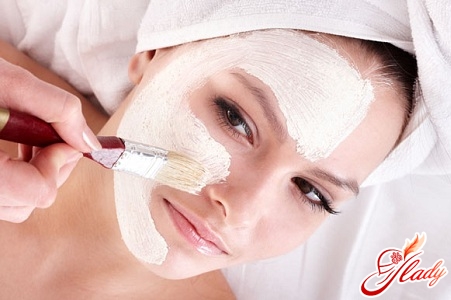 In skin care, cleansing is the very first step.and the main step. However, daily facial cleansing cannot cope with clogged pores, sebaceous plugs, dirt deposits, dust and dead cells. For this, there is facial cleansing - a procedure for deep cleansing of the skin and clogged pores. Facial cleansing can be done in various ways: using hands, tools or special devices. The most common types of facial cleansing are manual (hand) and mechanical (instrumental) cleansing. Chemical facial peeling is also quite common. The latest achievements in cosmetology are such types of cleansing as ultrasound, laser, vacuum, and electric current cleansing. Mechanical facial cleansing is the deepest and most effective way to cleanse the skin, as well as one of the most common today. This is a classic technique of the procedure along with manual cleansing. However, this is a drastic measure that will suit you if there are old problems on the skin - sebaceous plugs, acne and comedones.
In skin care, cleansing is the very first step.and the main step. However, daily facial cleansing cannot cope with clogged pores, sebaceous plugs, dirt deposits, dust and dead cells. For this, there is facial cleansing - a procedure for deep cleansing of the skin and clogged pores. Facial cleansing can be done in various ways: using hands, tools or special devices. The most common types of facial cleansing are manual (hand) and mechanical (instrumental) cleansing. Chemical facial peeling is also quite common. The latest achievements in cosmetology are such types of cleansing as ultrasound, laser, vacuum, and electric current cleansing. Mechanical facial cleansing is the deepest and most effective way to cleanse the skin, as well as one of the most common today. This is a classic technique of the procedure along with manual cleansing. However, this is a drastic measure that will suit you if there are old problems on the skin - sebaceous plugs, acne and comedones.
Features of mechanical cleaning
For mechanical facial cleansinga special tool is used - a metal double-sided spoon, also called Unna's spoon. At one end of this spoon there is a funnel with a hole in the very recess, and at the other - several holes, like a sieve. The funnel with a hole removes individual dirt, sebaceous plugs, acne. And the "sieve" scrapes off the upper keratinized layer of the skin and fat. Mechanical cleaning should be performed by a doctor or nurse, or a cosmetologist with good experience and recommendations. The facial cleansing procedure is quite long and traumatic, so it is necessary to observe all safety precautions. All tools, as well as the skin of the face and the hands of the master, must be thoroughly disinfected. The cosmetologist must work in gloves. The place of each individual removal of dirt should be immediately wiped with alcohol or a disinfectant. Mechanical cleaning is usually carried out as an independent procedure. However, it can be combined with various hardware cleanings, for example, ultrasonic or chemical. This will allow for a deeper cleansing of the skin of the face. Mechanical cleaning can be used to cleanse not only the skin of the face, but also the shoulders and back, neck and décolleté area. Mechanical cleaning has a number of indications:
- expanded and contaminated pores;
- comedones and black dots;
- acne and acne, rash;
- wen and milium (millet);
- acne;
- flabbiness of the skin and reduced its tone;
- dull and uneven complexion.
Description of the mechanical facial cleansing procedureThe mechanical cleaning procedure in a cosmetologist's salon is carried out in a special room. The client lies on a couch, and a lamp is directed at his face, well illuminating the work surface. The specialist sits above the head of the couch, performing the cleaning from above. Correct mechanical cleaning consists of several successive stages. Skin preparation First of all, the skin of the face must be thoroughly cleaned, all makeup must be removed and the surface must be wiped with a toner or lotion. Opening the pores This stage is called "vaporization" - steaming the skin of the face. Usually, the pores are opened using a steam bath over hot water, a decoction of medicinal herbs can be added to the water. You can also open the pores with the help of special vaporizers or lamps that heat the skin. This can also be done using various warming agents - masks and gels. Direct mechanical cleaning Thanks to the bright lighting, the specialist clearly sees all those imperfections and blackheads on the skin that are almost impossible to see on your own. The cleaning itself should be carried out while the pores are still open, this will reduce the pain and trauma of the procedure.
- Working with a sieve
First the master works on that sidea metal tool that resembles a sieve. This side removes fat and plaque from the skin, exfoliates the keratinized layer of skin cells. Infected areas with inflamed acne should not be touched with a sieve. On the forehead, the movements are directed from the eyebrows to the hair, on the cheeks - inward to the nose. The nose is cleaned from the base to the back, the chin - from the bottom up. The skin should be held with your fingers so that it does not stretch. The sieve is used to make movements similar to strokes. As it gets dirty, the sieve is washed.
- Working funnel
Now the master starts working with the funnelhole in the recess. It removes sebaceous plugs, acne and dirt. The hole of the spoon is placed on the area of dirt, lightly pressed, directing the movements from all sides to the center of the dirt. In this way, all dirt and sebum are removed from under the skin and come out through the hole in the spoon. The area of each single dirt must be wiped with alcohol immediately after cleansing. Skin disinfection After removing all visible dirt, the skin of the face is wiped with alcohol or alcohol tincture. For this purpose, you can also take calendula tincture, salicylic or boric alcohol. Some cosmetologists treat the skin with liquid nitrogen. All these techniques disinfect the skin well, prevent inflammation. Skin soothing After disinfecting and drying the skin, a drying mask is applied to the face, which soothes the skin and tightens the pores. It also reduces redness, prevents inflammation, reduces swelling and puffiness of the skin. The mask should be kept on the skin for at least 15-20 minutes. During this time, the pores will narrow and finally close, which will prevent the appearance of new impurities. Skin moisturizing After washing off the mask, apply a light moisturizing cream to the skin with massaging movements. Avoid using overly oily products, so as not to clog the pores again. If the skin is very dry, you can additionally apply a nourishing mask after the tightening mask. But the cream in any case should be light and non-greasy. Skin massage Some cosmetologists perform a facial massage after the cleansing procedure. There are many types of massage: classic and pinching, modeling and lymphatic drainage. However, the most effective is pinching massage (according to Jacquet). It stimulates blood circulation, as well as the production of collagen and elastin proteins. These substances are the building blocks for the skin, so it will recover much faster from microtraumas caused during the cleansing process. Jacquet massage stimulates and accelerates metabolism, affects the deep layers of the skin.
Recovery period
Mechanical cleaning procedure - processThis is quite painful, but the most effective. After it, there is a period of skin recovery. During the procedure, microtraumas are inflicted on the skin. Frequent impact on a small area of the skin of the face leads to redness, inflammation, swelling and puffiness. Tightening and soothing masks can eliminate these manifestations, but not completely. Pain and redness of the skin can be observed for several days after the cleaning procedure. This depends on the skin type and its sensitivity.
- Formation of crusts
The skin may crust over and peel in some places. The crust that forms should never be touched to prevent scarring.
- Washing
Do not wash your face for eight to ten hours after cleansing, as the effect of masks and protective creams will continue.
- A tan
Do not stand for two to three days after cleaning.expose your face to direct sunlight or visit a solarium. For normal and uniform production of melanin by the skin, it must be fully restored. Otherwise, unwanted pigmentation may occur.
- Cosmetics
Do not use decorative cosmetics for several days after mechanical facial cleansing.
- Necessary funds
Use light moisturizing and nourishing creams with a soothing effect.
- Alcohol
Avoid lotions and toners containing alcohol to avoid drying out your skin. For particularly problematic areas of the skin, it is better to use healing products.
Cleaning time
Carrying out facial cleansing, especially mechanical,It is good to plan in advance. You should not do the cleaning shortly before the upcoming special event or holiday, as there is a long recovery period after the cleaning. It is better to do the cleaning on the weekend and spend the next few days at home. This way you can avoid new contamination of the pores and skin of the face. Women need to plan their facial cleansing in accordance with the menstrual cycle. You should not do the cleaning during your period, as well as in the last 10 days before it starts. This period is the time of the highest activity of the sebaceous glands, so the pores after the cleaning will very quickly become clogged and dirty again. The cleaning will not have any effect. It is best to do the cleaning 2-3 days after the end of your period. For oily and problematic skin, mechanical cleaning should be done once every two or three months. But for dry skin, which is usually not so problematic, it will be enough to cleanse twice a year. As already mentioned above, mechanical cleaning is a radical deep cleansing procedure. Therefore, if your skin requires more frequent cleansing, it is better to replace mechanical cleansing with a less aggressive hardware or chemical one.
Contraindications
Despite the traditional nature and versatility of the mechanical facial cleansing procedure, it has a number of contraindications:
- extensive inflamed rashes on the skin of the face;
- eczema;
- dermatitis in acute form;
- viral diseases of the body, especially herpes;
- Diseases of the scalp;
- acute allergic reactions;
- Couperose and vascular network on the face;
- especially sensitive skin;
- low pain threshold.
In any case, even if you don't havelisted diseases, before carrying out the cleaning it is worth consulting with a dermatologist or a highly qualified cosmetologist. We recommend reading:









